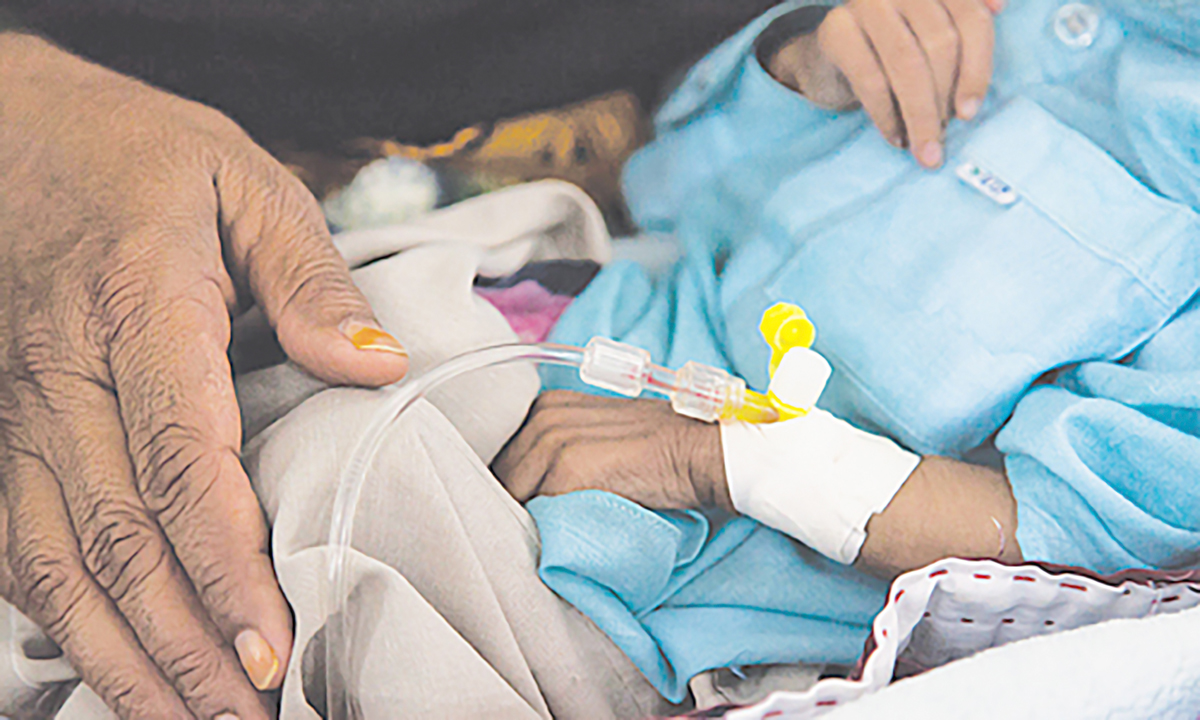By Hamza Nasir
Health economics, a discipline that explores the allocation of healthcare resources in the face of scarce supply, is essential for maximizing the efficiency, equity, and sustainability of healthcare systems globally. Healthcare is considered a human right for all citizens; therefore, healthcare is a national priority. The importance of understanding and prioritizing health economics has never been more evident.
The importance of health economics in Balochistan cannot be understated. It is crucial for policymakers to prioritize the well-being of Balochistan’s future and understand why decision-makers must prioritize a healthier future for Balochistan.
Balochistan, despite being the largest province of Pakistan in terms of area, has one of the weakest healthcare sectors in the country. There are no good healthcare facilities where people can seek medical aid for their ailments. In the year 2000, during a global summit of the United Nations, the majority of heads of state came to a consensus to work towards achieving the health-related MDGs by 2015.
However, there has been limited progress in Balochistan towards attaining these health-related objectives. The main reason behind our failure to achieve the goals set out in the MDGs is that our healthcare facilities in both urban and rural Balochistan are in very bad condition. The quality and availability of services at these healthcare centers have worsened, mainly due to the weak and corrupt political government in the province, which has not made the necessary improvements to the healthcare system. Internal politics within healthcare institutions, involving both professionals and non-professionals, have severely hampered their efficiency.
A small group of individuals wield significant influence over the entire healthcare system in Balochistan. Hospitals and clinics are facing shortages of crucial items, including proper medications and up-to-date medical equipment. , ambulances, well-trained doctors and nurses, and other critical components for good healthcare.
Provincially, there are hospitals in each district’s main town, and they also run Basic Health Units (BHUs) and Rural Health Centers (RHCs) to offer basic healthcare in cities and rural areas. They have 553 BHUs, 89 RHCs, and 89 Maternal Child Healthcare Centers (MCHs) for the scattered population. In the main city, Quetta, there are five hospitals: BMC, Civil, Fatima Jinnah Chest & General Hospital, Helpers Eye Hospital, and Sheikh Khalifa Bin Zayed Hospital. The BHUs are managed by the People’s Primary Health Care Initiative (PPHI), a semi-government organization. Additionally, there are 567 Civil Dispensaries (CDs) in the province.
The healthcare situation in Balochistan is extremely poor, whether it is the doctor-to-patient ratio (1:1000) or the nurse-to-patient ratio (1:50). Many children die before the age of five, and maternal and infant mortality rates are alarmingly high.
In rural areas, healthcare services are inadequate, and hospitals are in a discouraging state. Even in district hospitals like Sibi, Khuzdar, and Loralai, there are specialists, but they lack essential medicines and equipment. Patients often have to turn to private hospitals in other regions for better care, and even the BMC and Civil hospitals in civil hospitals in Quetta have not provided satisfactory services with non-functional MRI machines for the past 5 years.
The situation in the provincial headquarters in Quetta is quite similar. It’s facing a problem because five of its biggest hospitals are dealing with a lot of Afghan immigrants coming in. Meanwhile, in the private health sector, they focus more on making money and often don’t follow the idea of helping people in need. The poor condition of the provincial headquarters implies an even worse condition in rural areas.
In Balochistan, 23 hospitals in various districts are inefficient (Published in The Balochistan Point on February 18, 2015), with issues like missing doctors, medicines, and transportation, leading to fatal outcomes for serious patients. The unequal distribution of wealth in the sector is causing such disastrous consequences, and the government of Balochistan is not being provided the necessary budgetary allocation for these improvements.
The amount spent on health services is hardly sufficient to bring any meaningful change in the system. Poor public health services in the province leave the patients with no choice but to opt for private hospitals. Patients are being avoided in government hospitals to benefit private hospitals and clinics.
Improving healthcare in Balochistan, Pakistan, is of paramount importance, and learning from successful healthcare systems worldwide can provide valuable insights. This comprehensive approach includes enhancing healthcare worker education, supporting research and innovation, modernizing healthcare infrastructure, empowering local health officers, establishing robust oversight, implementing an efficient Health Management Information System, fostering public-private collaboration, seeking international support, optimizing resource allocation, and involving the community in healthcare decisions. Customizing these lessons to the Balochistan context can lead to the development of an accessible, high-quality, and efficient healthcare system. As members of the community, we can also contribute by promoting health awareness, supporting local health initiatives, and actively participating in community healthcare programs.
It is through this collaboration between the government, healthcare professionals, the community, and taking inspiration from successful global healthcare systems that Balochistan can make significant strides toward accessible, high-quality, and efficient healthcare for all residents.
The Author is a graduate of Economics from BUITEMS, Quetta and can be reached at hamzan039@gmail.com.


